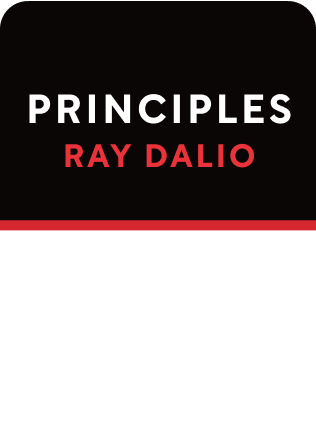

This article is an excerpt from the Shortform summary of "Principles: Life and Work" by Ray Dalio. Shortform has the world's best summaries of books you should be reading.
Like this article? Sign up for a free trial here .
Do you really know how to evaluate employee performance?
Learning how to evaluate employee performance is an important part of any manager’s skills. Providing good evaluations is part of being a manager, and helps build a positive company culture.
Keep reading to find out how to evaluate employee performance.
How to Evaluate Employee Performance
Managing people is a simple series of steps. Learning to how evaluate employee performance is part of these goals.
- Define the goal.
- Give the goal to people who can achieve it. Preferably, you don’t need to tell them what to do to achieve it (this is micromanaging).
- Hold the responsible people accountable for reaching the goal.
- If they fail, train them and give them time.
- If they can’t do the job after this, switch them to a different job that matches their strengths, or get rid of them.
The ultimate responsible party is the person who bears the consequences of failure. If you’re the business owner, that is you. For example, it’s your responsibility to pick the right doctor, since you bear the responsibility if she does a bad job, not the doctor’s.
Here are Dalio’s principles on how to train new people, evaluate how people are doing, and how to decide what to do with people based on how they’re doing. This is how you can learn how to evaluate staff performance.
Evaluation
Make a clear “contract” on what the expectation of work is. Without this, you can’t hold people accountable for it not being fulfilled. When everyone knows the expectations, it makes deciding how to evaluate employee performance easier.
- Review goals, tasks, and responsibilities at least once a quarter.
- Meet more frequently to get in sync—perhaps at a ratio of 1:10 to 1:20 for the time spent with the person over the time the person spends working.
- If someone performs poorly, make sure it’s not because the expectations weren’t clear to them.
Make your metrics clear-cut and impartial. Define the most critical metrics, and have discipline in checking them regularly.
- Even better, tie the metrics formulaically to predetermined consequences (like bonuses).
Take data points over time to notice patterns in people. Built from the specific data—their metrics, performance, input from others—up to an overall impression. This is an important part of knowing how to evaluate staff performance.
- Bridgewater uses the Dot Collector to compile thousands of data points about people over time.
Evaluate employees with the same rigor as you do job candidates. Don’t be easy on people just because they’re not outsiders.
Hold people to the same standards, and provide feedback consistent with the standards.
- Don’t hold the stronger performer to a higher standard.
- Don’t spread the blame. The person who is most in the wrong needs to get the strongest feedback. Otherwise, they might believe they didn’t cause the problem.
Assign credit precisely. Specific people are responsible for specific results.
- Everyone thinks what they’re doing is more important than it really is. People tend to overestimate their own contributions. If you survey people on what their % contribution to the organization is, you’ll end up with well over 100% in total (Bridgewater’s was 300%).
Dalio likes “forced rankings,” in which people rank their co-workers from best to worst. This prevents an assessment of everyone as above average, and it helps identify low performers. This is one way to decide how to evaluate employee performance.
Don’t be overconfident about your assessments. Use other people to develop your assessment.
- Triangulate your impressions of people with other believable people.
- Get in sync with the person you’re giving feedback to. Do they agree with your feedback?
Judge people based on both their reasoning and their outcomes. Often, the outcomes are out of their control, and if the person had sound reasoning, they should not be punished for a poor outcome. This is an important part of knowing how to evaluate staff performance.
- To use a golf analogy, “Pay more attention to the swing than the shot.”
Periodic performance reviews should contain few surprises—feedback should have been delivered continuously so that people know where they stand. This is an important tool for knowing how to evaluate employee performance.
Check behavior, and deter bad behavior. More people than you think will cheat if given the opportunity.
- Choose people to audit or investigate. Explain that you’re doing this and why to the people under audit, so there are no surprises.
- They shouldn’t take this personally as a lack of trust, just as bank tellers shouldn’t complain when banks count the money in drawers.
- Auditors’ procedures should not be known to those being audited.
- Find ways to audit the auditors to avoid simple rubber stamping.
- If you find a rule violation, use “public hangings” to deter future bad behavior.
Now that you know how to evaluate employee performance, you can use these techniques with your own staff.

———End of Preview———
Like what you just read? Read the rest of the world's best summary of Ray Dalio's "Principles: Life and Work" at Shortform .
Here's what you'll find in our full Principles: Life and Work summary :
- How Ray Dalio lost it all on bad bets, then rebounded to build the world's largest hedge fund
- The 5-step process to getting anything you want out of life
- Why getting the best results means being relentlessly honest with everyone you work with






